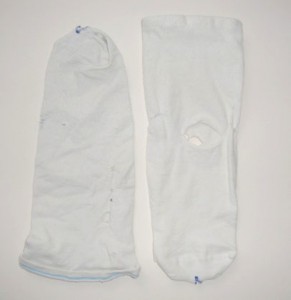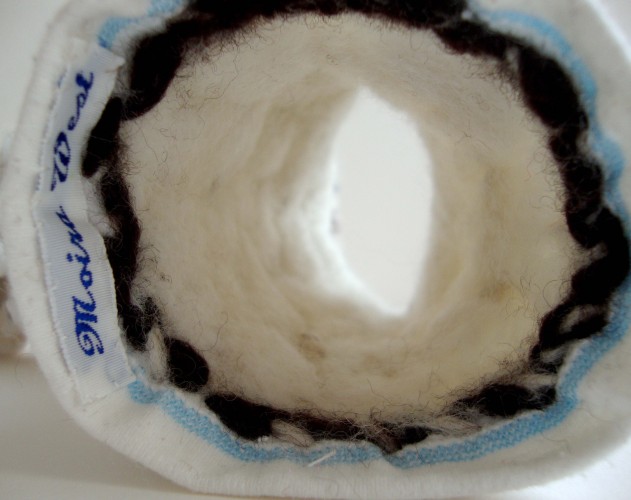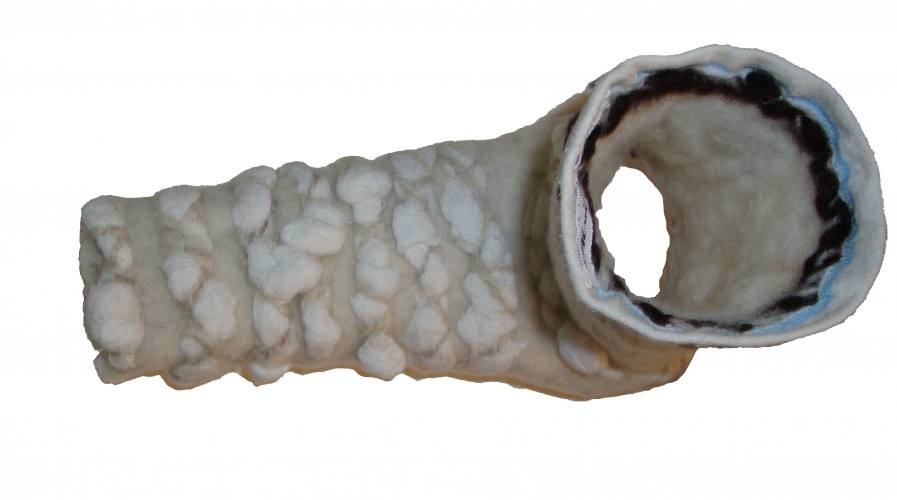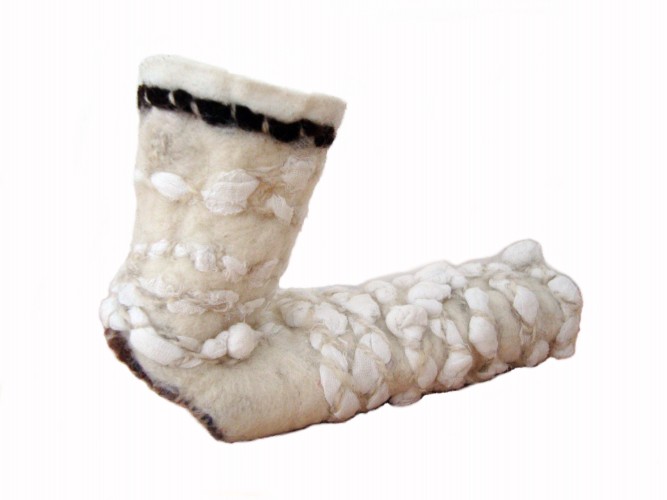Design source, Childhood memories, exploration of human frailty, reworking, free form vessels and 3D sculptural forms: related to donated stump socks (liners) in memory of, and in celebration of the life of Daniel J Toner – 5.12.61-18.2.12, (Dan), “A lovely American man who loved life and was the life and soul of the party”.
Materials – Alpaca, merino, Swaledale, jute, yarn, gauze, silk, viscose, yak and stump sock (liner).
Process and Evaluation
This small, flat, holed liner used by Dan in his younger days provides evidence of its use as a sock. I wanted to preserve an impression of a foot shape by enhancing the existing holes caused by wear and tear and by using the materials to promote the medical impression. I selected wool for its pertinent qualities; softness, tonality and strength. Yarn in a dark brown for the opening and a variegated yarn for the holes. Gauze added pattern and aided the creation of a textured sculptural form.

Before turning the sock inside out, and placing a resist inside the upper opening, worn areas were stitched with the selected wool yarn. A fine layer of Alpaca/merino mix was then lightly needle felted onto the inside of the man-made sock.
The process of adding a key was reversed, with additional layers of wool added to the formed base, using a Swaledale/merino mix to add weight and shape. Once completely covered with wool the sock was stitched with additional yarn around the openings, then bound with knotted gauze. The opening rim of the sock is the only original part remaining visible. To complete the design element the gauze was stitched in place using a light tie-dyed wool yarn. The whole was then wet felted by hand to ensure the required shape was maintained.
Once dry the whole resembled a slim foot profile with openings at the heel, toe and ankle.
The piece retains a medical influence and links to the idea of being attended to by using gauze similar to bandage to create the texture. The tying of knots and inclusion of clearly identifiable stitches further emphasise the limitations which disability imposes.
The brown yarn seemed, on reflection, to be too heavy, detracting from the main section. I cut this from around the smaller opening and also trimmed the tri yarn from around the larger opening. The result exposes more of the original sock within the wool providing aesthetic balance.


